Art Collectors
What I Buy and Why: How Collector and Art Advisor Jeanne Masel Has Learned to Know What She Wants When She Sees It
We caught up with the collector at her home in Brooklyn.
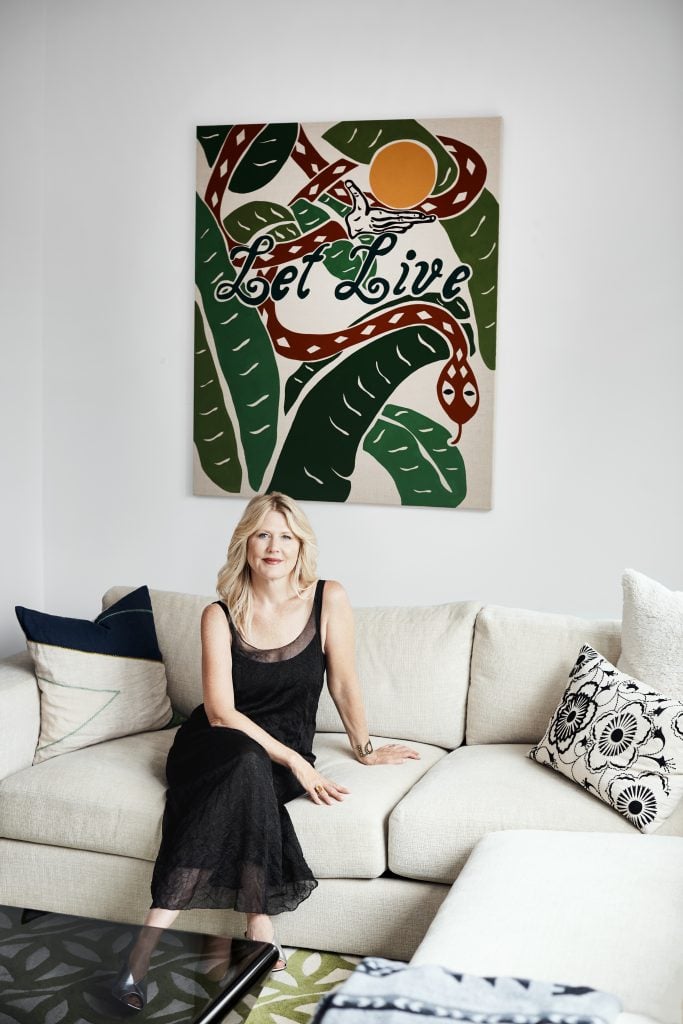
We caught up with the collector at her home in Brooklyn.

Sarah Cascone

Jeanne Masel is a different kind of art advisor. She connects socially minded collectors and artists through her business Art for Change, which she founded in 2018; with each sale, her company makes a donation to the nonprofit of the artist’s choice, meaning that collecting and philanthropy can work hand-in-hand.
A veteran of Christie’s New York and art non-profit Independent Curators International, Masel is also a passionate collector in her own right.
Over the years, she’s loaned selections from her extensive holdings to such institutions as the Brooklyn Museum, Santa Barbara Museum of Art, in California, and the Centro de Arte Contemporaneo de Malaga, in Spain.
We spoke with Masel about what’s hanging on the walls of her Brooklyn and Bridgehampton, New York, homes, and about how she knows what she wants when she sees it.
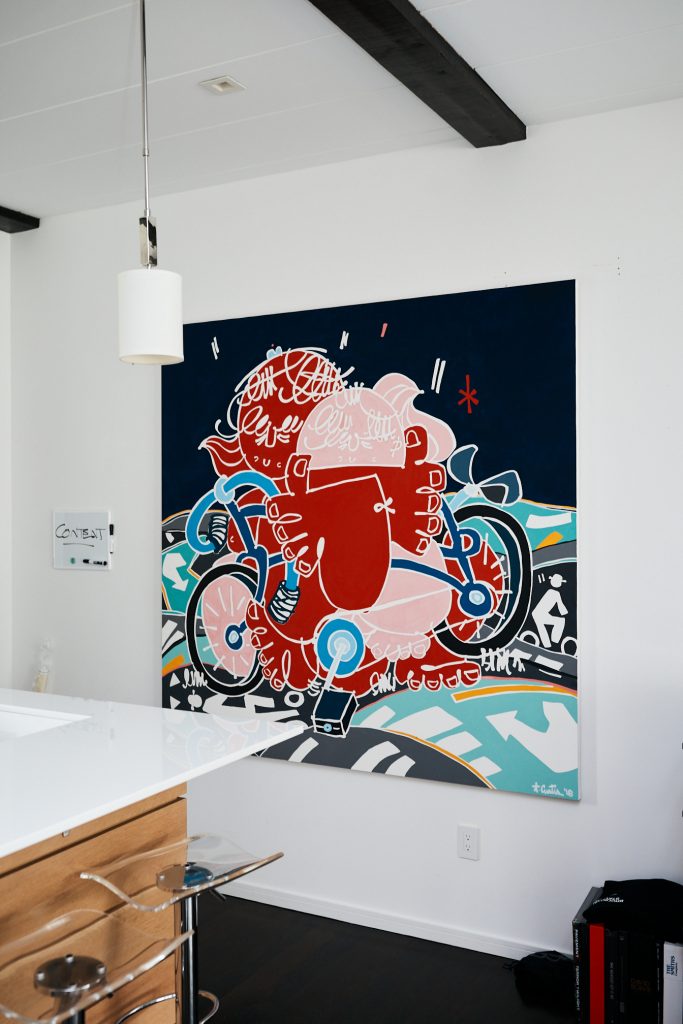
Timothy Curtis, Two Cyclists Earth and Child (2018). Photo courtesy of Jeanne Masel.
What was your first purchase?
I started buying art in college. I studied art history at the University of Iowa and they have a really great African art collection. Not only were the pieces beautiful, but I also loved the deep histories, traditions, and material culture they embodied.
Some of the first artworks I bought were African wood carvings, and I still have a passion for African art today. Two of the first works we acquired for our vacation home were a Bamana antelope headdress, called a Chiwara, from Mali and a Baga mask from Guinea. My early love of African art, which taught me to deeply examine artworks for underlying cultural, historical, and personal significance, has really stuck with me and definitely informs how I approach collecting today.
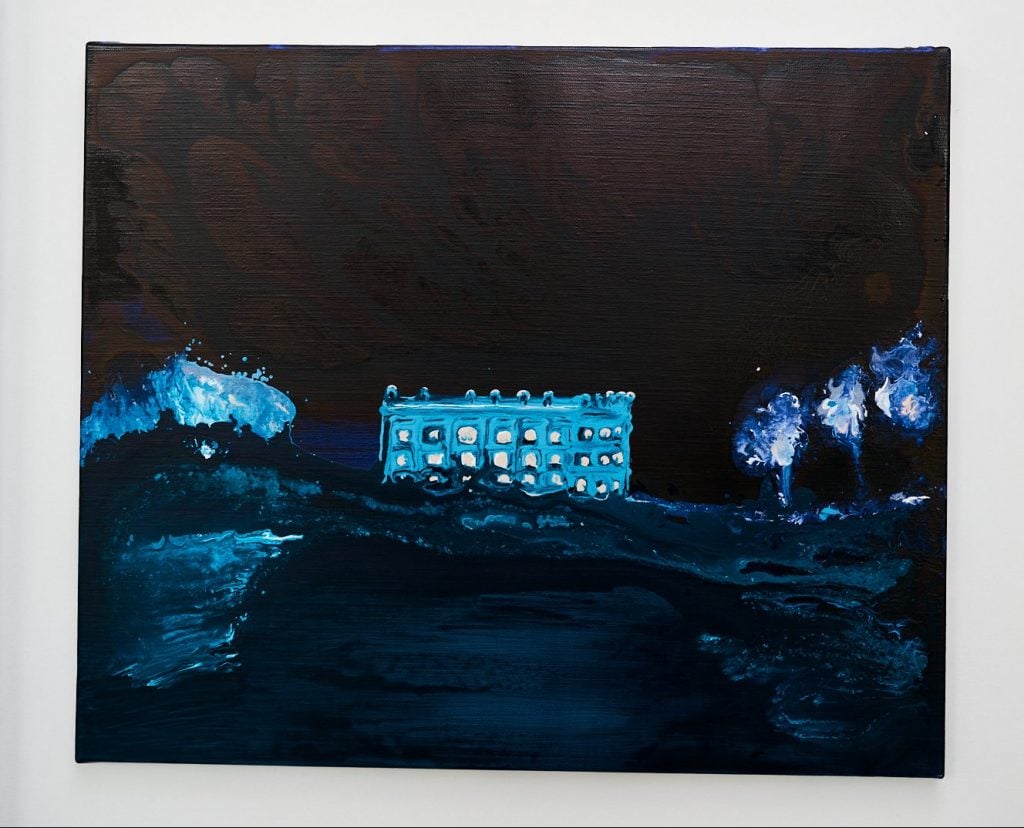
Genieve Figgis, Blue House (2014). Photo courtesy of Jeanne Masel.
What was your most recent purchase?
My most recent purchase was a painting titled Headlights by Danielle Orchard. I have been following her work for years, and appreciate the way her paintings engage with the visual language of modern masters like [Pablo] Picasso and [Henri] Matisse. I first discovered her work in 2017 at an emerging art fair. I’m thrilled to have acquired a painting recently from Perrotin, a gallery whose program I admire and support often.
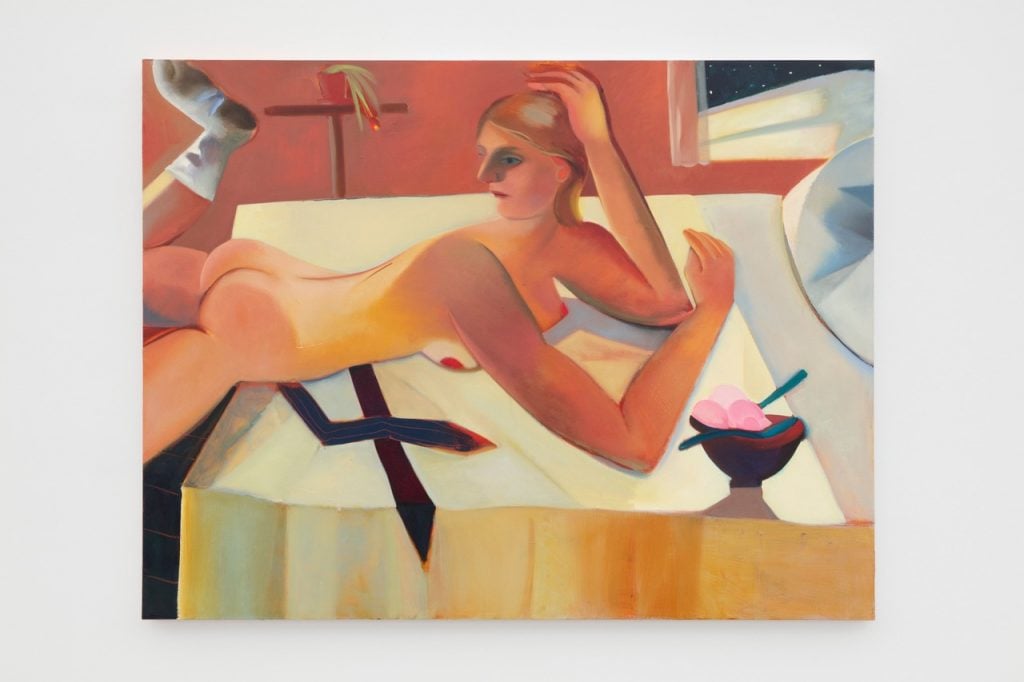
Danielle Orchard, Headlights (2022). Courtesy of Jeanne Masel.
I’ve also had the pleasure of working with Danielle on a few limited edition print projects with my platform Art for Change, a socially conscious business I founded in 2018. We work with emerging and established artists and donate a portion of our proceeds to nonprofits that they align with—we’ve found it to be a winning combination. We released our third print with Danielle during Art Basel Miami Beach.
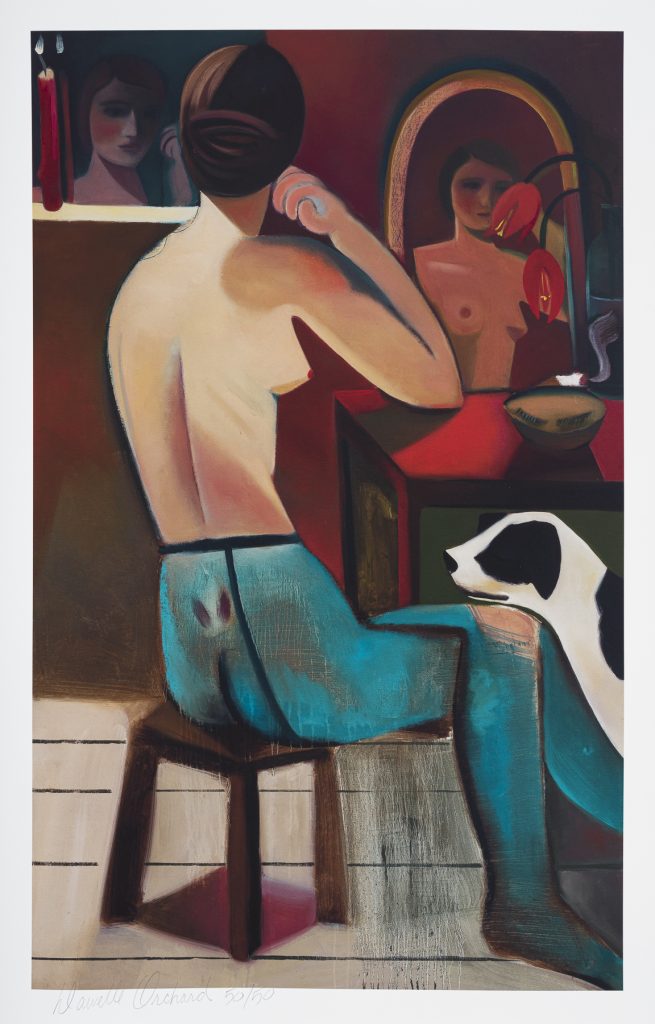
Danielle Orchard, Early Demands (2022), print for Art for Change.
Which works or artists are you hoping to add to your collection this year?
We are looking for an outdoor sculpture—we have nook in our backyard in Brooklyn that we’d love to activate with a sculpture; as it is outside, we have a specific vision in mind of an artwork that engages with nature. This is a great example of how I collect: it’s very intuitive actually! It’s both about having a location I want to activate and a sense of what I’d like the work to convey. We don’t have artists in mind per se, but I think we’ll know it when we see it!
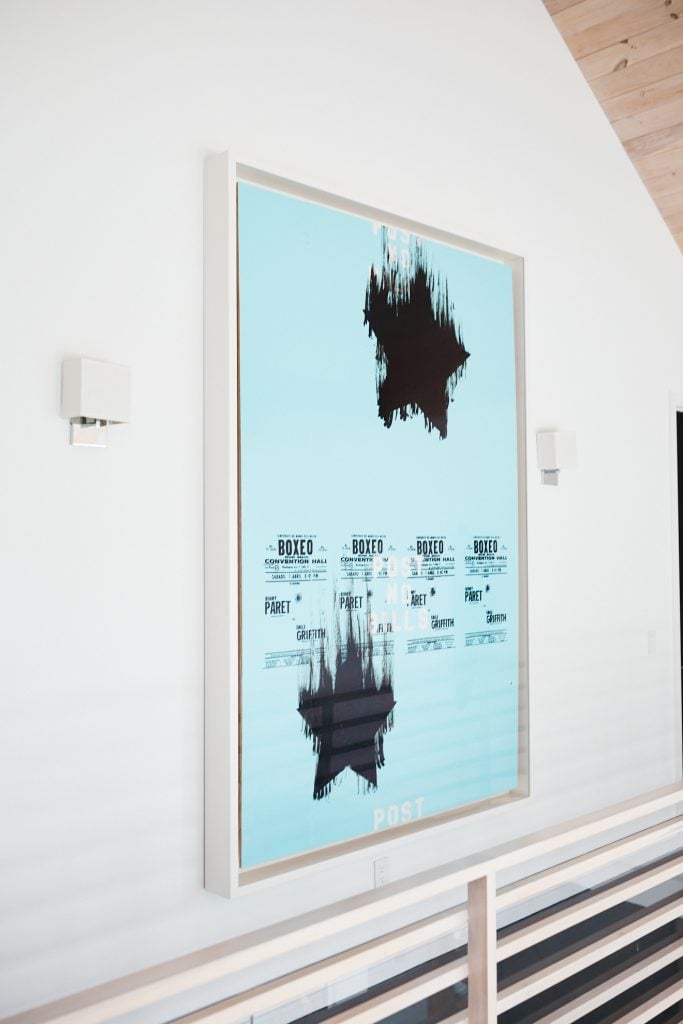
Gary Simmons, Convention Hall (2013). Photo courtesy of Jeanne Masel.
What is the most expensive work of art that you own?
Rather than thinking about art as a commodity, I focus on collecting art that inspires us, has a deeper meaning, and is thought provoking. Great works of art are ones that I want to share with family and friends and discuss for great lengths of time. I don’t really think price factors into that.
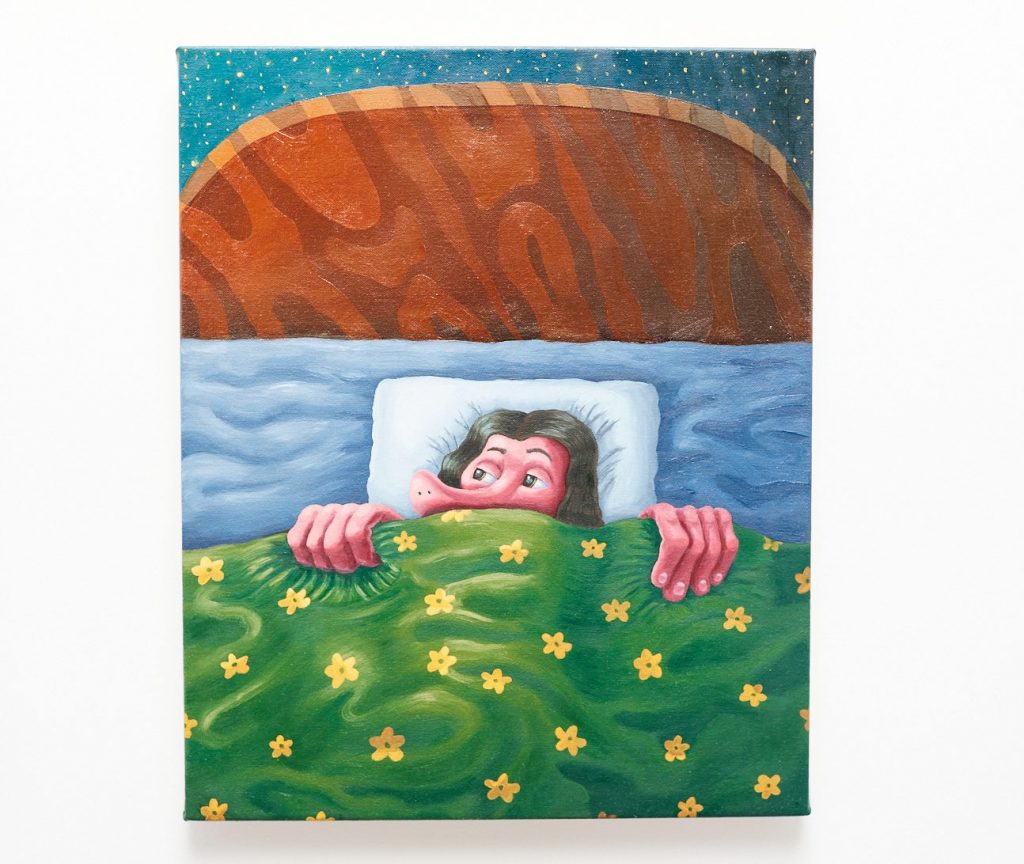
Nicasio Fernandez, Is It Time Yet (2021). Photo courtesy of Jeanne Masel.
Where do you buy art most frequently?
As part of my work with Art for Change, I often go visit artists in their studios. I am so inspired by the artists’ stories and influences. Quite often, I will learn about their upcoming gallery shows and get to see works in process. This happened recently with Jean-Pierre Villafañe, an emerging artist with Puerto Rican origins. I first learned about his work through Embajada, a wonderful Puerto Rican gallery in San Juan.
When visiting Jean-Pierre’s studio in lower Manhattan over the summer, I saw an incredible diptych he was working on for an upcoming show. Even though it wasn’t finished, I knew right away this was a work I wanted to add to our collection. Jean-Pierre made sure we had access to the piece when it went to a New York gallery show in September.
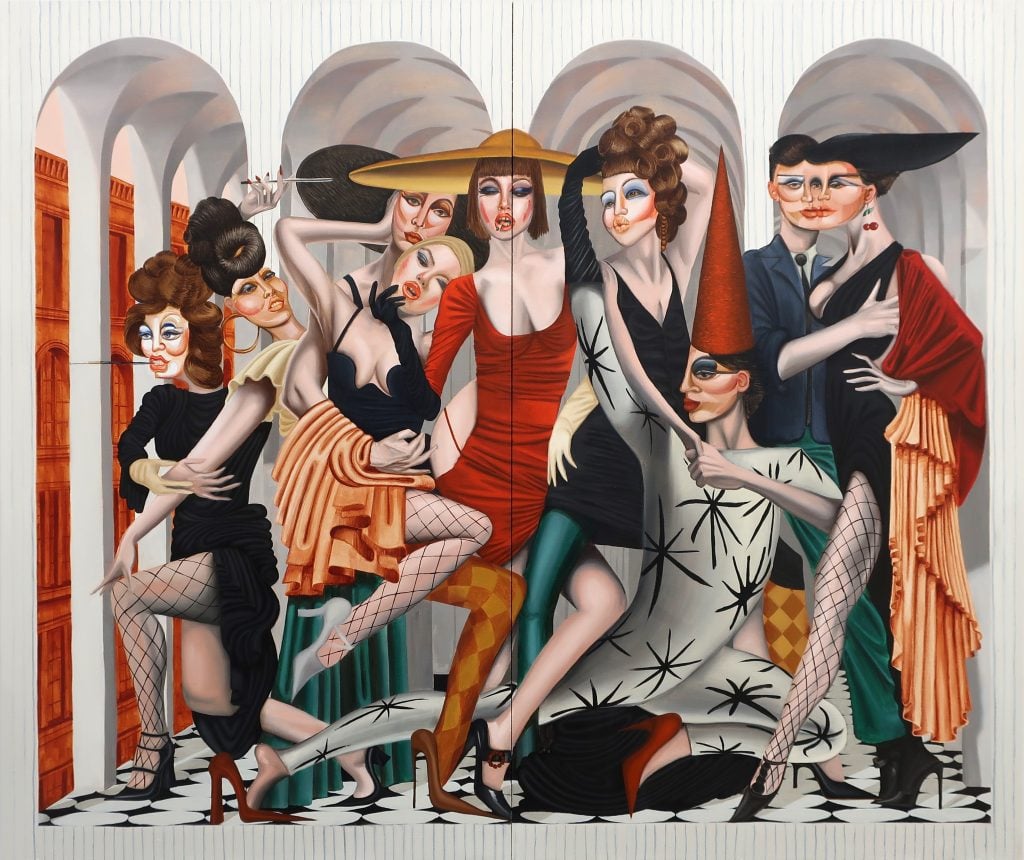
Jean-Pierre Villafañe, Rear Window. Courtesy of Jeanne Masel.
Is there a work you regret purchasing?
Not really. I think collecting is a process and certainly there were some early works I acquired that are no longer in my collection because I hadn’t really honed my eye. We’ve been collecting artwork for over a decade now, so I have an intuition that I trust. Today, when I see an artwork I love and it clicks, I don’t look back!
What work do you have hanging above your sofa?
We have a really great painting by Joel Mesler, Let Live, a piece we acquired in 2019. Climate change is something that I am thinking about often these days, as a mother and as a human on this planet. After meeting Joel at a gathering for the Whitney Museum of American Art [in New York], I told him that I really wanted a work that was inspired by our planet, and commissioned him to create a painting with this in mind.
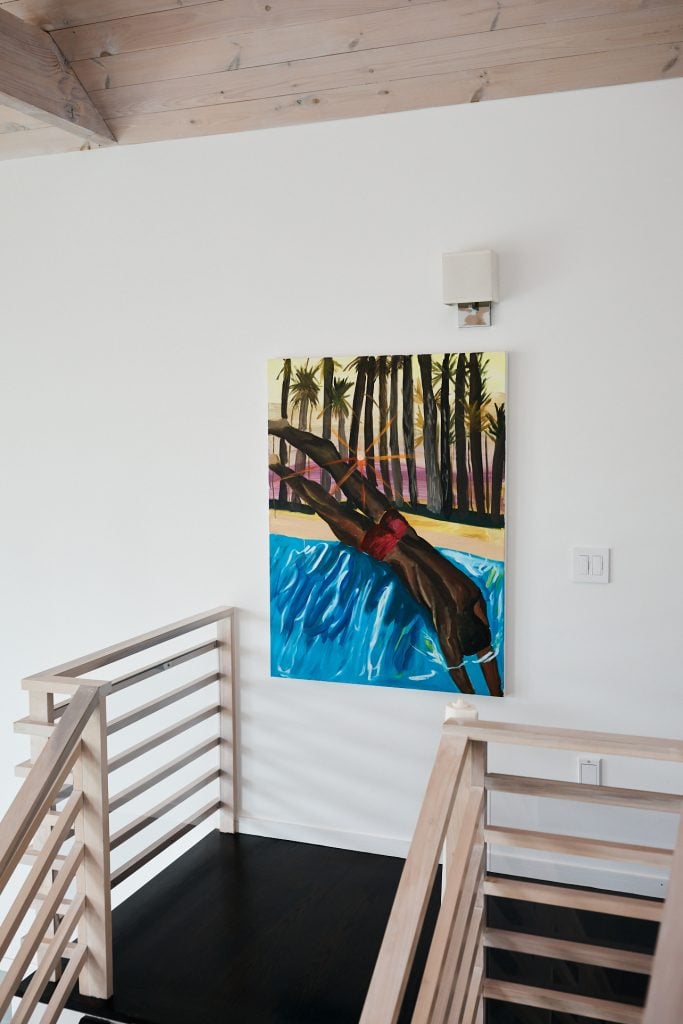
Marcus Brutus, Deep (2020). Photo courtesy of Jeanne Masel.
What about in your bathroom?
We have a mosaic in our master bathroom that we commissioned Summer Wheat to create. I had the pleasure of visiting Summer in her studio a few years ago. She is such a kind, thoughtful person and she spent time showing me not only the many beautiful paintings in her studio but also renderings of mosaic projects she had been working on.
The mosaic she created for us is based on one of my favorite works by her, Shallow Water. I told Summer how much I loved the work when it was on view at the Kemper Museum of Contemporary Art [in Kansas City], so she used that as inspiration for creating our mosaic. The finished mural is spectacular—it has made the bathroom one of my favorite rooms in our home!
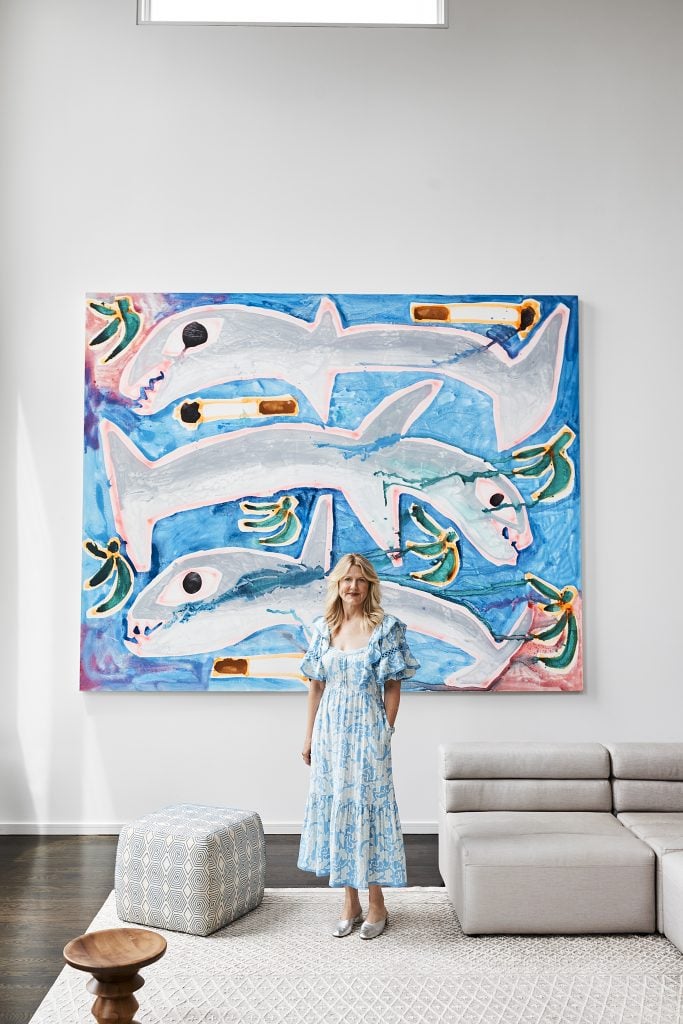
Jeanne Masel with Katherine Bernhardt’s Three Sharks (2015). Photo by Weston Wells, courtesy of Jeanne Masel.
What is the most impractical work of art you own?
Three Sharks by Katherine Bernhardt—it is huge, so it can only hang in one spot at our home! It is one of my favorite paintings in our collection. I had the opportunity to sit next to Katherine at an Independent Curators International gala a few years ago. When I showed her the work, she said “You got a good one!” I agree.
What work do you wish you had bought when you had the chance?
George Condo. We were considering a Condo painting in the style of Rembrandt several years ago. We didn’t move forward with the acquisition, and I wish we had.
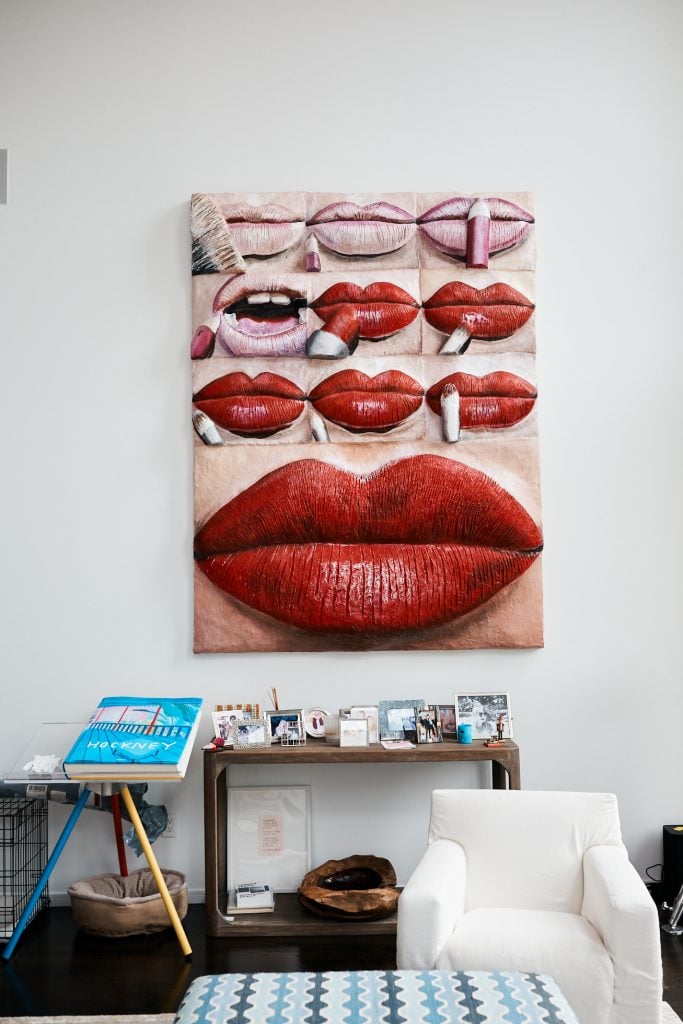
Gina Beavers, Passo a Passo (2020). Photo courtesy of Jeanne Masel.
If you could steal one work of art without getting caught, what would it be?
I have always loved Marcel Duchamp’s Nude Descending a Staircase. Not only is it a visually stunning painting, but Duchamp is a towering figure in contemporary art history. I admire how he completely changed how we look at art in general. It’s not very often that an artist completely redefines what art is and I really love that about him.